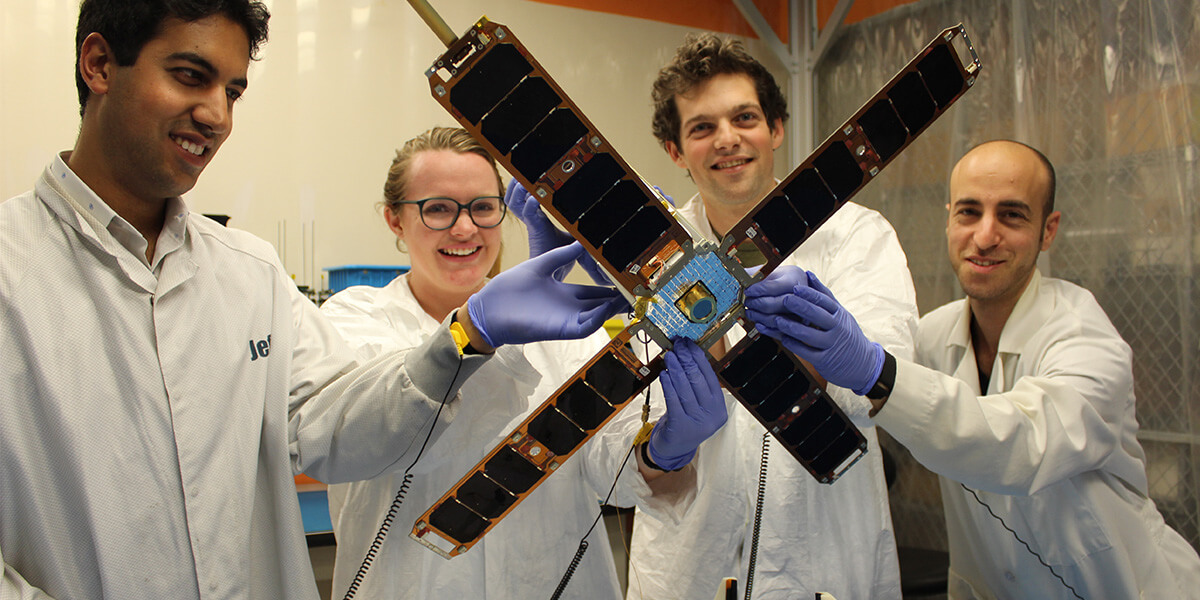Ready for Launch: Students Deliver USC’s Third CubeSat Satellite

A satellite built by students at the USC Information Science Institute (ISI) Space Engineering Research Center (SERC) took a giant step toward space last week, when the team successfully delivered the miniature satellite, or CubeSat, to space technology company Vector Launch Inc. for launch later this year. This marks the third time that USC has built and delivered a CubeSat for space.
The GalacticSky-1 satellite is carrying specialized payloads to test and validate advanced processing capabilities in Earth’s low orbit. During the six-month integration effort, the SERC team integrated Vector’s GalacticSky payload with their existing satellite hardware from USC’s successful Aeneas satellite that launched in 2012.
Space-bound
Built at ISI by a team of USC engineering students led by David Barnhart, a USC astronautical engineering research professor and director of SERC, the nano-satellite includes a set of new boards and components for flight research projects designed for operation in low Earth orbit’s thermal and radiation environment.
“I am particularly proud of the student team on this project—none of the students had worked on complicated real-time operating system platforms or space flight hardware before coming on-board,” said Barnhart.
Gedi Minster, a master’s student in astronautical engineering, worked on the satellite’s mechanical design, thermal and vibration analysis.
“I learned how to do spacecraft thermal and vibration analysis, how to use software simulations to inform design decisions and how to work in a space-capable clean room,” said Minster. “I am proud the team was able to do so much work in such a short amount of time with Professor Barnhart’s leadership. Our satellite is going to space!”
Made the grade
GalacticSky-1 will also host and support new flight payload components and test out a new B-Dot controller for the satellite’s magnetic torque guidance and control system. This new algorithm and controller will de-spin the satellite using the Earth’s magnetic field vectors saving power, which is in short supply on nano-satellites.
“There is no substitute for operating in space and to that end our challenge was to get GalacticSky on orbit as soon as possible,” said USC Viterbi alumnus Darren Garber, PhD ’12, who currently serves as president of government systems at Vector Launch Inc.
“Working with USC’s SERC team at ISI was a natural fit since they had a mission-proven satellite in need of a payload, and GalacticSky needed a satellite to integrate with. The integrated Vector and SERC team successfully delivered GSky-1 on time and on budget within six months.”
Following its launch, the satellite will be monitored by SERC students and employees from a ground antenna at the USC campus and from SERC at ISI’s headquarters in Marina del Rey. The mission is expected to be completed in 90 days, but the satellite could remain in orbit for several years.
Published on March 25th, 2019
Last updated on May 16th, 2024